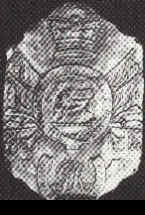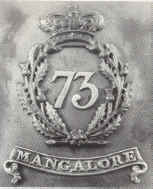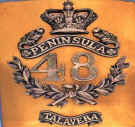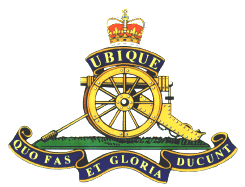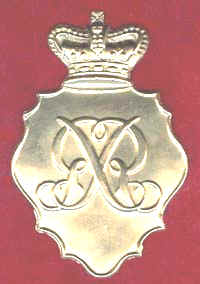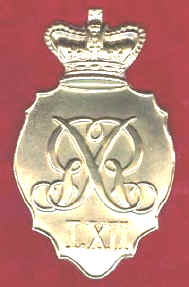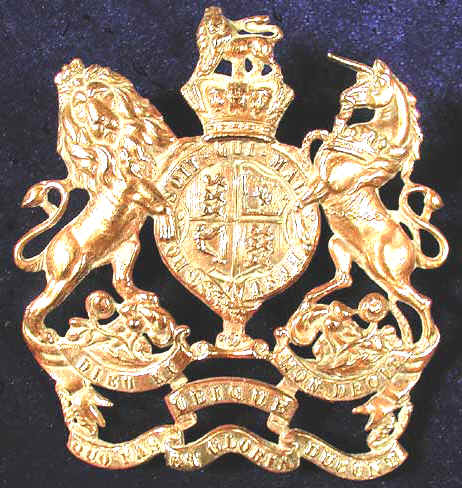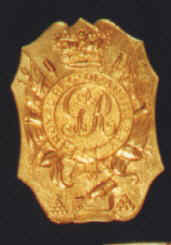 |
|
|||
|
|
||||
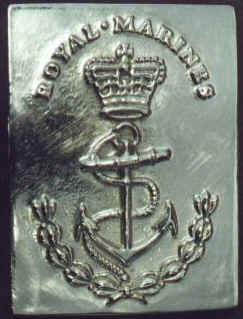
|
Regiment Badges of British Units | ||
| in Australia 1790 - 1870 | |||
|
|
|||
|
|||
| Also see the buttons of the | |||
|
|
|
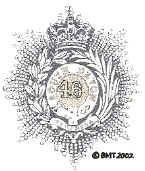 |
|
| NSW Corps | 73rd | 46th | 48th |
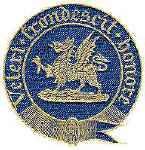 |
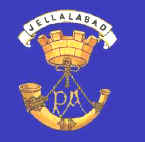 |
 |
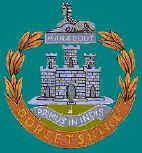 |
| 3rd | 40th | 57th | 39th |
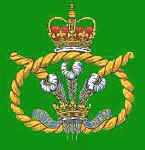 |
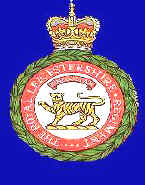 |
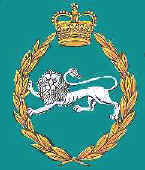 |
see below |
| 63rd | 17th | 4th | 50th |
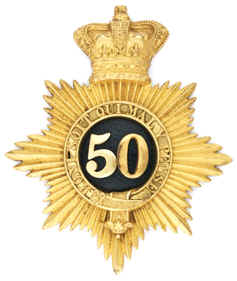 |
Henry Evelyn Woodville Preston obtained his commission (by purchase) as Ensign in the 50th (Queen's Own) Regiment of Foot on 9 November 1855. At that time his regiment was on active service in the Crimea. The 50th returned from these duties in August 1856, and embarked for Ceylon on 30 June 1857. In 1858 Preston qualified as regimental instructor of musketry, and on 11 February 1859 was promoted lieutenant. In 1863 the 50th Foot was sent to New Zealand following the outbreak of further fighting with the Maoris. Preston was present with the regiment when it disembarked at Auckland on 15 November 1863, and it is further recorded that he was present during the assault and capture of Rhagiawhia on 21 February 1864. | ||
|
Following service in New Zealand the 50th Regiment was sent to New South Wales to reinforce local defences. Preston accompanied his regiment and was stationed at Victoria Barracks, Sydney, for three years. The 50th Foot was the fourth Imperial regiment to occupy the Barracks. In 1869 the regiment returned to England and on 1 April 1870 Preston was promoted Captain and placed on half pay. In 1875 he was appointed to the 5th Northumberland Fusiliers, joining that regiment in India. The following year he returned to England on account of his wife's ill health and retired from the Army by sale of his commission. He had completed over 20 years service. A handwritten account of Preston's life after leaving the Army states that, with his wife, he returned to Australia in 1877 with a view to obtaining employment in the local Defence Forces, but failed to gain a suitable appointment. In 1882 his wife died. In 1883 Preston was appointed a JP. He also sat on the bench of the Water Police Court for more than two years in an attempt to qualify for the position of a PM, but failed. He later unsuccessfully sought the position of resident magistrate of Norfolk Island, and of visiting magistrate of Lord Howe Island. Preston died in 1905, and is buried at Waverly Cemetery. |
|||
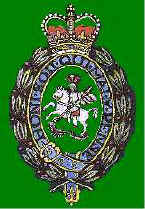 |
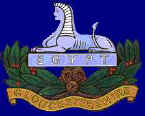 |
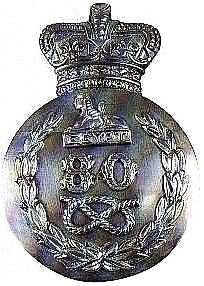 |
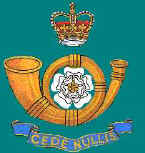 |
| 21st | 28th | 80th | 51st |
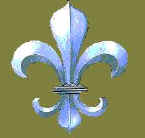 |
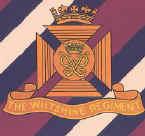 |
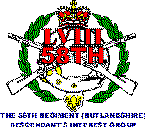 |
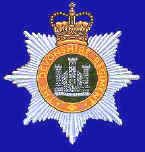 |
| 96th | 99th | 58th (unofficial) | 11th |
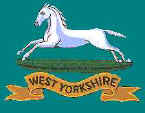 |
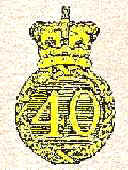 |
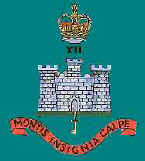 |
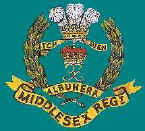 |
| 65th | 40th & see below | 12th | 77th |
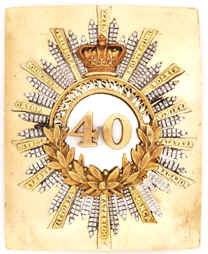 |
Officer's gilt and silver shoulder belt plate for the 40th (2nd Somersetshire) Regiment of Foot. A note attached to the back of the plate, written in 1907 by Henry Burton, formerly a lieutenant in the 40th Foot, states that the plate belonged originally to Captain Wyse (also known as Wise) who was killed at Eureka Stockade in 1854. The pattern of plate is for 1824-44 but Wyse evidently continued to wear it rather than replacing it with the more elaborate 1845 pattern. The gilt plate has a silver centre. Superimposed over this is a silver star burst with gilt 'rays' bearing the regiment's battle honours. A circle within this is formed by a gilt laurel wreath and '2ND SOMERSETSHIRE', surmounted by a gilt Victorian crown. In the centre are gilt numerals '40'. |
|
Henry Christopher Wyse led a company of 106 men of the 40th Regiment, sent from Geelong to deal with unrest among the gold diggers at Ballarat. When the rebel miners made a stand at Eureka Stockade on 3 December 1854, Wyse remained at his post despite receiving a flesh wound to his thigh. He was then mortally wounded by a German digger and fell on the inside of the Stockade's entrenchment. Shot through the head of the tibia and fibula, where they joined his knee, a decision was made to amputate his leg later that day. Wyse appeared initally to make a good recovery but he developed an infection and died on 21 December 1854, at the age of 26. He was given a military funeral in Ballarat. |
|
| as yet not found | 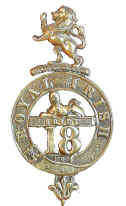 |
|
| 14th | 18th (Royal Irish) | Royal Artillery |
|
Shako Plates |
|
| General Service "Waterloo" Shako plate, 1815 | Units often wore the Shako plate with the Unit numerals added as shown here for the 92nd. |
|
Royal Artillery & Royal Engineers post 1832 |
|||||||||||
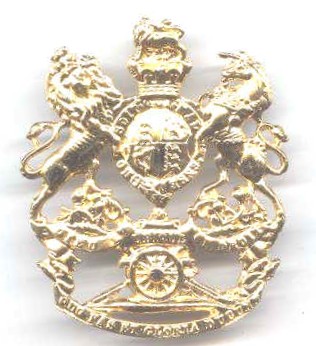 |
Badge
of The Corps of Royal Engineers & the Royal Artillery (The
Royal Arms)
On 10 July 1832 King William IV granted the Royal Regiment of Artillery and the Corps of Royal Engineers permission to wear on their appointments the Royal Arms and Supporters, together with a cannon and the mottoes Ubique above the cannon and Quo Fas et Gloria Ducunt below it. In 1868 the cannon was omitted from the Corps of Engineers Badge. |
||||||||||
|
|
|||||||||||
|
|
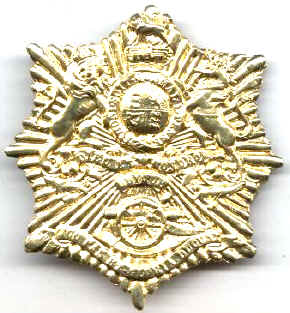 |
||||||||||
| 1800-1812 Royal Artillery Shako plate | Royal Artillery shako plate 1846 - 1855. Gold Plated | ||||||||||
|
|||||||||||
| The King's Overseas Dominions Regiment 1924 | |
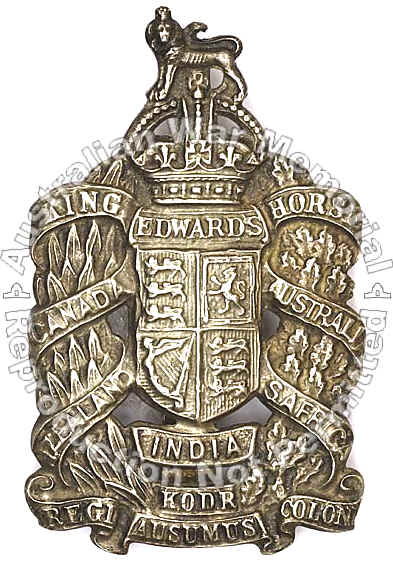 |
King
Edward's Horse or The King's Overseas Dominions Regiment was a British
yeomanry regiment formed in 1910 and disbanded in 1924.
White metal hat badge for King Edward's Horse. The badge shows the Royal coat of arms surmounted by a King's crown and lion. A wreath surrounds the coat of arms and has a scroll winding around it with the words KING EDWARD'S HORSE CANADA AUSTRALIA NZEALAND SAFRICA INDIA KODR REGI AUSUMUS COLONI
Refer 4th County of London (King's Colonials) Imperial Yeomanry |
